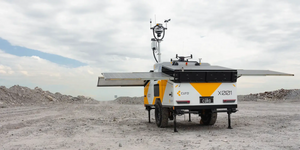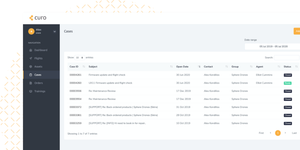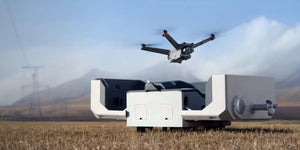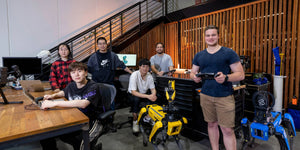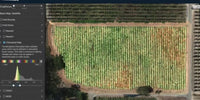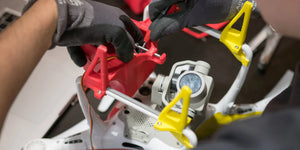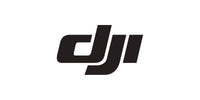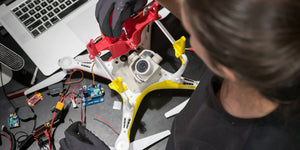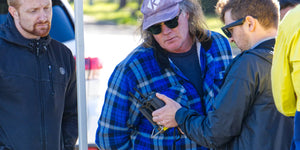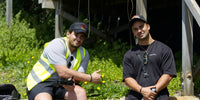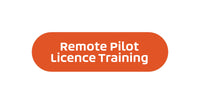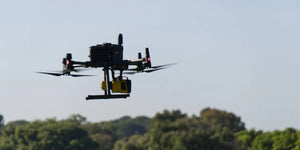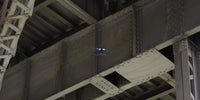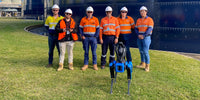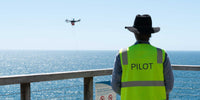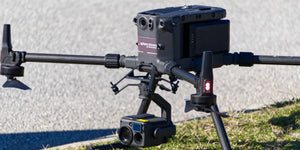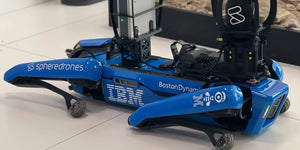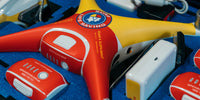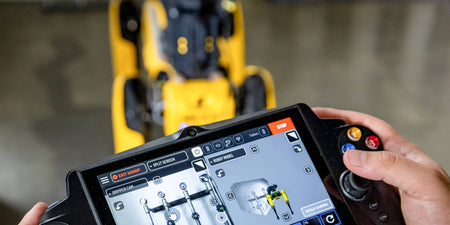Boston Dynamics has released the latest software version for its Spot robot. This version takes Spot to v3.1 and comes with a wide range of improvements, upgrades, and big fixes.
Autonomy
New action editing feature
Mission Action editing allows users to edit mission Actions while connected to the robot via the Autowalk > Edit button, or offline without being connected to the robot.
New undo button that deletes mistakes made during recording
Autowalk users now have the ability to undo Actions and waypoints created during mission recording.
If a mistake is made during recording, such as driving the robot in the wrong direction, or recording the wrong Action, the user can tap and hold the Undo button. The robot then follows the Autowalk mission in reverse, deleting waypoints and Actions while the Undo button is still pressed.
When the user releases the button, the robot will position itself on the closest waypoint and update the mission file.
This undo functionality enables users to delete unwanted mission elements on site, rather than in a post-mission edit or requiring the operator to deselect these Actions during playback.
Improved fiducial detection and dock detection
Spot docking reliability has been improved, especially in low lighting or if the dock is in direct sunlight.
- In the event of a communications loss, critically low battery power, or a Safe Power Off Request, the robot will exit the stairs before sitting and powering off.
- The direction of travel will generally be to descend the stairs unless the robot has already reached the top landing.
- Users may opt-out of this behavior in mobility params and command parameters available in the API or tablet menus.
Behaviour
Stairs error handling: Prevent sitting on stairs
To improve safety while operating on stairs, the robot will now autonomously exit the stairs in scenarios where it would have previously attempted to sit.
Tripod mode: Strike a pose and never move
When the robot completes a Stand command and comes to rest in its final pose, the robot will now enter a “frozen” state with locked joints. This keeps the robot more stationary for sensor data collection. Disturbances will still cause the robot to adjust and react to recover its position. The status of this frozen state is provided by the new StandingState enum in StandCommand.Feedback. Please refer to the Spot SDK for more details.
Manipulation
Constrained Manipulation: Mobility coordination with the task
Body steering commands have been integrated into constrained manipulation tasks to control the pose of the body relative to the hand. For example, this allows the robot's body to move out of the way while opening a drawer.
- Mobility coordination can be turned on or off via the checkbox marked “Enable Robot Locomotion (Beta)” on the tablet while in constrained manipulation. It is off by default.
- Enabling locomotion during constrained manipulation can cause a reduction in overall force the hand can apply. If the hand appears to be stuck or struggling, try disabling locomotion.
- Enabling locomotion is not compatible with high force mode. If high force mode is enabled, the checkbox to enable robot locomotion will be automatically disabled.
Improvements to the tablet manipulation app for Spot Arm
Enhancements to the Spot tablet manipulation application include:
- The manipulation split screen view now supports a top-down view of the robot and the obstacle map.
- A velocity slider has been added to control arm speeds during telemanip.
- Acceleration limits were tuned to make the arm less jerky.
- Door parameter selections have been made more obvious.
- Stop gravity aligning the gripper image in order to make telemanipulation grasping easier.
- Tap-to-gaze performance has been improved.
- More gaze control buttons have been added in the gripper camera screen.
- Added a Widen Robot Stance button to widen the robot's stance during constrained manipulation.
- Added a dismissible warning when using the manipulation app without any hardware joysticks.
- The palm-fingertip slider in the grasp wizard now resets to a 100% palm grasp when the robot has moved far enough away from the previous grasp.
Spot Arm: Gripper calibration
A Spot Arm diagnostic has been added to the SpotCheck diagnostic and calibration capability using the Spot tablet controller. A gripper calibration stage was added to the end of the existing SpotCheck routine that will run automatically if a Spot has a Spot Arm attached. The calibration routine opens and closes the gripper quickly, and then more slowly, to recalibrate it. Results are shown on the SpotCheck summary page. If there is a problem calibrating the gripper, it will appear in the “Arm Cal” summary tab.
Payloads
Improved Spot CAM image capture speed in sensor pointing
The 3.1 Spot CAM release contains a new image service with the Spot CAM sources that is faster at capturing images than the pre-3.1 services. The robot services that handle capturing data from Spot CAM were updated to use the new Spot CAM image service while maintaining backwards compatibility. This change speeds up teleoperation Spot CAM captures, and recording and playback of missions with Spot CAM captures. Missions recorded prior to 3.1 will still work with these updates and do not need to be re-recorded.
Rajant dashboard
The robot admin console now has an additional dashboard for debugging Rajant radios, including viewing dropped packets, SNR, and temperature of the radios for the past hour.
Portainer
Users will no longer be prompted to enter or change the password during the first Portainer login. The default Portainer password is now set to “p0rtainerDEFAULTpassword” with “admin” as the username.
Spot CORE
Bumped the bundled SDK version to 3.1.0.
More port forwards are now support for more Spot payloads
Prior to Spot v3.1.0, Spot supported a maximum of two payloads with port forwarding. This release adds port forwarding for an additional three payloads.
- Each payload receives forwards in a pattern 2xyyy, where x is the payload number, and yyy is port.
- The ports are limited to yyy values of 022, 080, 443, and 100 to 199.
- The payload itself will see these ports as 22, 80, 443, and 2x100 to 2x199.
Platform
Automatic robot license updates
Spot can be configured to connect to a Boston Dynamics server and receive software license updates automatically. The manual license process is still supported and can be used if Spot is on a network which is airgapped from the Internet.
3D payloads visualiser added to Admin Console
The Spot Admin Console now has a 3D visualization tool. Operators can use the tool to see the position and orientation of the robot’s body, legs, and arm (if applicable). The tool also displays the bounding boxes and centers of mass for payloads. The payload display can be used simultaneously with the payload configuration page to ensure payloads have been configured correctly.
Scout
Session history by Action rather than mission session
Mission data can now be more easily compared by using a new feature in Scout that allows you to view data by Action rather than by individual mission session.
Alerts can now be configured for thermal inspection or other anomalies detected off robot
Users can now receive alerts via email or PagerDuty when a problem with the robot occurs or an anomaly is detected by a computer vision model running on Spot CORE or elsewhere off the robot. Alerts can be submitted via gRPC or returned by a Network Compute Bridge worker.
Tutorial: Data Collection
A new tutorial demonstrating how to capture data from sensors is available on the Spot SDK.
New Samsung Tab Active3 tablet
Samsung Tab Active3 is now an officially supported tablet for the Spot Controller Application in addition to the existing JXD tablet. The Active3 is a powerful, reliable, ruggedized tablet well suited to use in a wide variety of environments. The Spot Controller Application has been updated to work well on the Active3, even in touchscreen-only mode
Choreography
- Arm More can be initialised from the current pose of a connected robot.
- EStop timeout can be set through a command line argument.
- New tablet interface for executing Choreography Sequences.
Issues fixed in this release
Improved force sensing and force control
Added a runtime correction to the zero offset for the joint’s force sensors. This correction will be applied to the factory calibration shortly after operation after enough data has been collected. Force control and gravity compensation is now more accurate.
Spot Arm: Stability improvements
Reduced unstable arm-body interactions in certain regions and improved force limiter performance when the Arm is carrying medium weight items.
New Enterprise Wi-Fi files not recognised as changes to apply
Fixed an issue where the Apply button was not enabled after uploading new Enterprise files. This forced the user to change some other field in the Admin Console to enable the Apply button.
Dock fiducial size being incorrectly set
Fixed an issue where a user could incorrectly change the size of the 500 series dock fiducials which would cause docking to no longer work properly. Existing configurations can be cleared to resolve incorrect dock fiducial size.
Fixes for Spot CORE
- Fixed start-up issues for fire extinguisher detector.
- Fixed an issue where LiDAR connection fault would only flash briefly.
Source: Boston Dynamics
